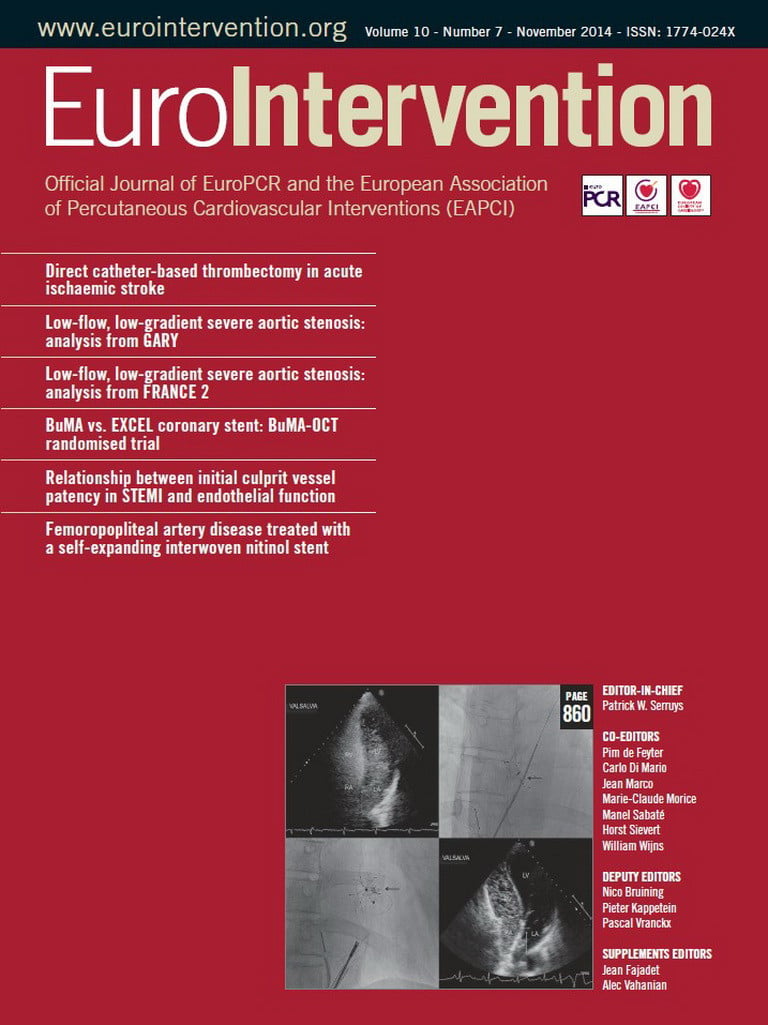I read with great interest the meta-analysis by D’Ascenzo et al regarding the effects of remote ischaemic preconditioning (RIPC) in patients undergoing percutaneous coronary intervention (PCI)1. This meta-analysis confirms our simultaneously published findings, even though our meta-analysis included a different number of studies2. The authors are to be commended for further identifying the patients who would benefit the most from this intervention by performing a meta-regression. Given our recent research on the subject, I would like to offer a few comments on the paper by D’Ascenzo et al.
The authors cite the study by Bøtker et al stating that RIPC reduced troponin release for patients presenting with ST-segment elevation myocardial infarction (STEMI)3. This study and a similar study by Rentoukas et al were among the nine initially selected articles, even though they were subsequently excluded for not evaluating clinical endpoints4. According to a commonly used definition of preconditioning, the ischaemic stimulus is to be delivered before the index ischaemia5, and therefore this intervention cannot be termed preconditioning in the setting of STEMI and primary PCI. This was taken into consideration by the authors of the two STEMI trials, who termed their intervention as “remote ischaemic conditioning” and “remote ischaemic periconditioning”, respectively3,4. According to the available evidence, there are differences, albeit subtle, in the mechanisms involved in the various forms of ischaemic conditioning. Therefore, in my opinion, other cardioprotective interventions used during or immediately after the index ischaemia should not be included with RIPC studies.
Second, even though available experimental evidence suggests that the main cardioprotective effect of RIPC is not mediated through modulation of an otherwise enhanced inflammatory state5, this cannot be safely concluded from this meta-analysis. C-reactive protein (CRP) levels were measured at 16-24 hours post PCI in the included studies6-8, whereas CRP levels have been known to peak at two to three days after the onset of MI. In fact, in a study which evaluated CRP kinetics at 48 hours after PCI and RIPC, CRP did not appear to reach peak levels within the study duration, while statistically significant differences between the study groups were only observed at 48 hours post PCI9.
In conclusion, in agreement with our previous work, this analysis by D’Ascenzo et al suggests that RIPC before elective PCI is effective in reducing periprocedural myocardial infarction (PMI). Even though this may not be equivalent to the reduction of major adverse cardiovascular events, RIPC is simple to apply, non-invasive, virtually cost-free, and could be incorporated into clinical practice.
Conflict of interest statement
The author has no conflicts of interest to declare.
We read with great interest the letter of Zografos concerning our recent meta-analysis about remote ischaemic preconditioning (RIPC) for patients undergoing percutaneous coronary intervention (PCI)1.
First, the authors interestingly pointed out other possible explanations for excluding the studies of Bøtker et al3 and of Rentoukas et al4. We agreed with them, especially about the subtle and potentially different mechanisms of various strategies of conditioning, although it should be noted that the study of Bøtker et al recruited patients with acute myocardial infarction, depicting a totally different population, both from the point of view of mechanistic processes and of evaluation of the rising of cardiac markers of injury.
Moreover, they stressed the role of meta-regression to detect patients who may benefit more from RIPC: the increased efficacy in patients with multivessel coronary disease was already noted for patients undergoing surgical revascularisation, confirming an increased protective role for more challenging lesions and/or patients10,2,11.
Finally, the author stated that our study should not be viewed as conclusive about the effect of RIPC on inflammation, in particular on C-reactive protein (CRP). Their observations were quite accurate: in our opinion, to appraise an effect on inflammation correctly, patients at higher risk should be evaluated and with more subtle markers than CRP.
Conflict of interest statement
The authors have no conflicts of interest to declare.

